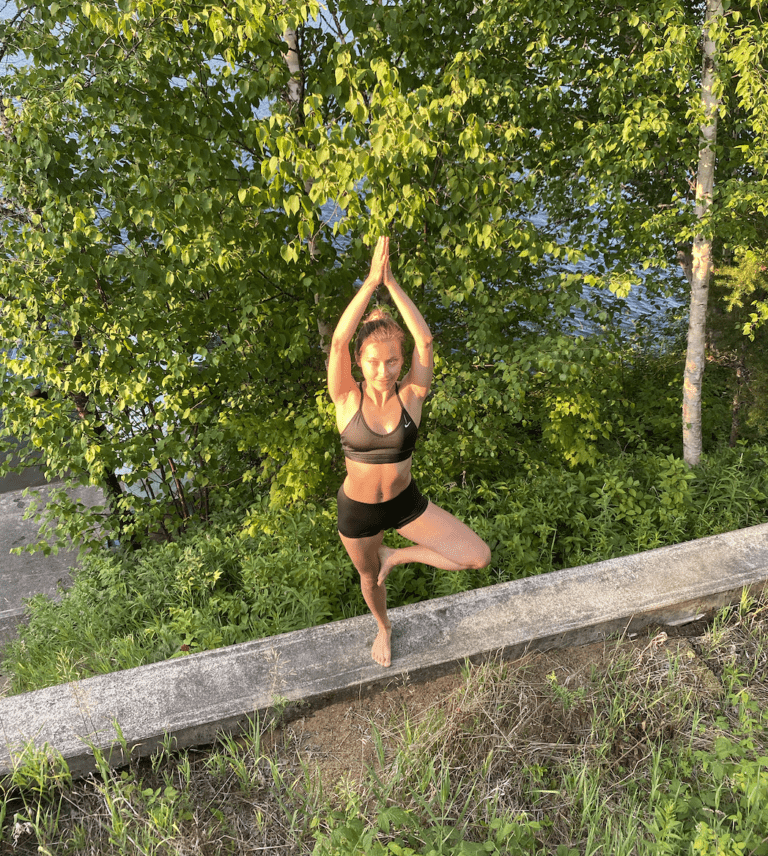Discover Balance and Strength with Vrksasana: The Tree Pose

In the world of yoga, finding balance both physically and mentally is of utmost importance. One pose that encapsulates this essence is Vrksasana, also known as the Tree Pose. Derived from the Sanskrit words “vrksa” meaning tree and “asana” meaning pose, Vrksasana invites practitioners to embody the rootedness, grace, steadiness, and strength of a tree.
This standing pose not only improves balance and stability but also cultivates focus and mindfulness.
Today, let’s delve deeper into the benefits and practice of Vrksasana.
The Pose
To practice Vrksasana, begin by standing tall with your feet together and arms resting by your sides. Find a fixed point in front of you to gaze at, which will help maintain balance. Slowly shift your weight onto your left foot, and then lift your right foot off the ground, bending the knee and placing the sole of the foot on the inner left thigh. Avoid placing the foot directly on the knee joint to prevent strain or injury. Once you find stability, bring your hands to a prayer position at the center of your chest or extend them overhead like branches. Hold the pose for several breaths, finding your balance and feeling the strength and stability radiate from your grounded foot.
To come out from the pose, slowly release your foot down and place hands by your side like in the beginning position.
Repeat on the second side.
Benefits of Vrksasana
Improved Balance: Vrksasana challenges your body’s balance and proprioception. Regular practice strengthens the muscles in your feet, ankles, and legs, improving stability not only on the mat but also in everyday activities.
Increased Focus and Concentration: Maintaining balance in Vrksasana requires concentration and mental focus. As you fix your gaze on a single point, you cultivate a sense of stillness and enhance your ability to remain present.
Enhanced Mind-Body Connection: This pose encourages you to connect with your body, bringing awareness to the alignment of your spine, the engagement of your core, and the grounding sensation in your standing foot. It fosters a deeper connection between mind and body, promoting overall well-being.
Strengthened Leg Muscles: Vrksasana engages the muscles of the standing leg, including the quadriceps, hamstrings, and calf muscles. Over time, these muscles become stronger and more toned, improving lower body strength and stability.
Improved Posture: Practicing Vrksasana helps to align the spine, shoulders, and hips. Regularly incorporating this pose into your routine can counteract the effects of poor posture caused by sitting for extended periods or performing repetitive movements.
Tips for Practicing Vrksasana
- Start with the support of a wall or a chair until you feel confident in your balance.
- Engage your core muscles to help stabilize your body.
- Find a focal point or drishti to help steady your gaze and maintain balance.
- Experiment with different arm positions, such as extending them overhead or keeping them at your heart center.
- Breathe deeply and maintain a relaxed posture throughout the pose.
CONCLUSION
Vrksasana, the Tree Pose, offers a beautiful metaphor for finding balance and strength in our lives. By emulating the qualities of a tree, we can learn to root ourselves firmly while still maintaining flexibility and grace. Regular practice of Vrksasana not only improves physical balance and stability but also nurtures mental focus and a deeper mind-body connection. So, take a moment to stand tall, ground yourself, and sway gently in the breeze of this powerful pose.